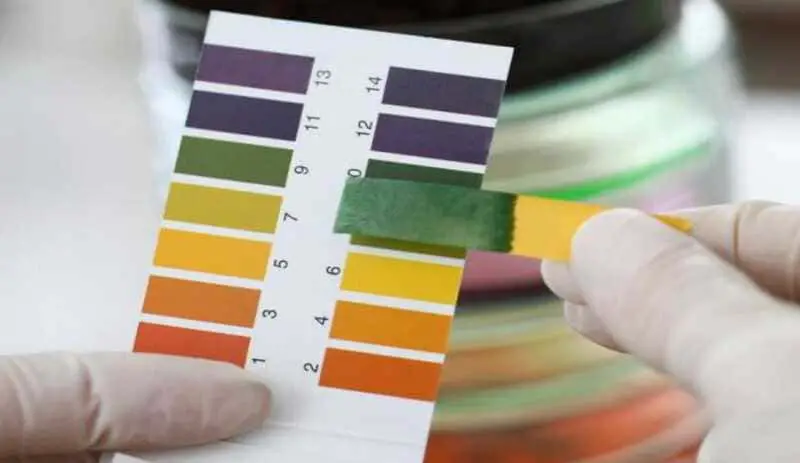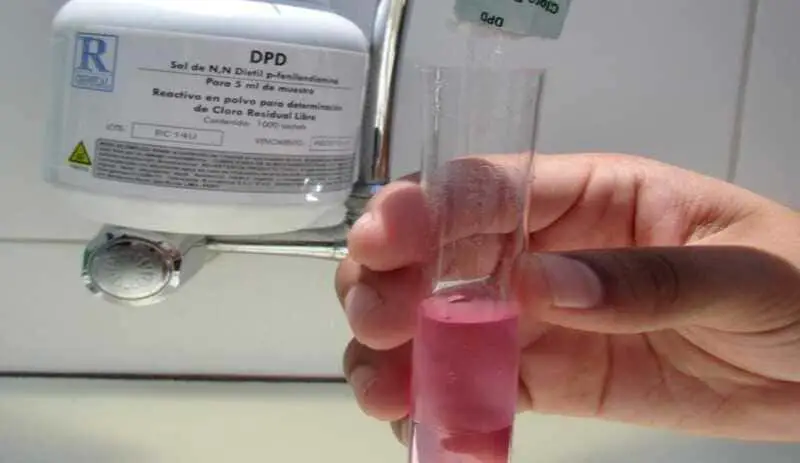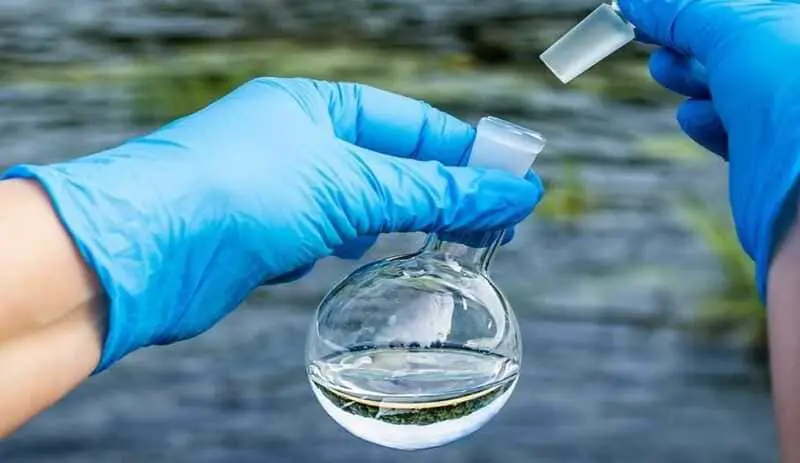Water is an essential resource for our survival and well-being, and its quality plays a fundamental role in our health. Although the water supply in our homes may come from municipal sources or private wells, it is important to be aware that even seemingly clear and safe water may contain contaminants invisible to the naked eye.
Performing a water quality assessment in your home has become an increasingly relevant practice to ensure the safety and purity of the water we consume. This assessment allows us to identify the presence of harmful substances, such as bacteria, heavy metals, chemicals and other potential contaminants.

In this article, we will explore the steps and considerations necessary to effectively perform a water quality assessment in your home. You will learn about the different parameters to consider, the tests available for home use and how to interpret the results obtained. In addition, we will provide practical tips on how to improve the water quality in your home and maintain a safe drinking water supply.
Water quality assessment will not only give you peace of mind in knowing how healthy your water supply is, but will also empower you to make informed decisions about water treatment and purification, if necessary. So, join us on this journey to discover how to conduct a water quality assessment in your home and ensure a safe and healthy environment for you and your family.
Common sources of household water contamination.
Water is a vital resource in our homes, used for drinking, cooking, washing and many other daily activities. However, it is important to keep in mind that the water that flows through our taps is not always free of contaminants. There are several sources of contamination that can affect the quality of the water in our homes, and it is essential to be aware of them in order to make a proper assessment.
One of the common sources of household water contamination is the municipal water supply system. Although authorities strive to provide safe drinking water, it is possible that problems may occur in the pipes or treatment plants, which could result in the presence of undesirable substances in the water that reaches our homes.
Another source of household water contamination is household chemicals. Many of the cleaning products we use contain toxic ingredients that can leach into the water through drains or poor waste disposal. Pesticides used in landscaping can also leach into groundwater and affect water quality in private wells.
In addition, pipes and plumbing systems in homes can contribute to water contamination. Older pipes made of materials such as lead or copper can release metal particles into the water, especially if the pH or temperature of the water is inadequate. Also, leaking pipes can allow harmful microorganisms to enter the water system.
Types of water quality tests available for domestic use.
When it comes to how to evaluate the quality of the water in our home, there are different types of tests available for testing. These tests, designed for domestic use, allow us to obtain valuable information about the composition and presence of contaminants in the water we consume. Knowing the different types of tests available is essential for a complete and accurate assessment.
One of the most common tests is the pH test. The pH is a measure of the acidity or alkalinity of water. This test tells us whether the water is within the recommended pH range for human consumption, which generally ranges from 6.5 to 8.5. A pH outside these limits may indicate the presence of contaminants or the need for an adjustment in water treatment.

Another relevant test is the chlorine residual test. Chlorine is widely used as a disinfectant in municipal water supply systems, but too much chlorine can have an unpleasant taste and odor. The chlorine residual test allows us to determine if the level of chlorine in the water meets safety standards and if any additional treatment is required.

In addition, there are specific tests for the presence of heavy metals, such as lead, copper or mercury, which can leach into the water through pipes. These metals are harmful to human health, and testing for heavy metals allows us to identify potential risks and take appropriate measures to mitigate them.
Bacteria testing is also critical in assessing water quality. The presence of bacteria such as Escherichia coli (E. coli) or fecal coliforms indicates fecal contamination of the water and represents a health hazard. These tests help us determine if the water is free of harmful bacteria and if additional treatment, such as disinfection, is required.
It is important to note that household water quality test kits usually come with detailed instructions on how to properly collect samples and how to interpret the results. By following these step-by-step instructions, you will be able to effectively perform a water quality assessment in your home.
How to interpret water quality test results.
Once you have gone through the process of how to assess the water quality in your home, it is crucial to know how to interpret the results to understand the safety and purity of your water supply. Proper interpretation of the results will allow you to take the necessary steps to ensure healthy drinking water for you and your family.
When it comes to interpreting water quality test results, it is important to keep in mind the standards and guidelines set by health and regulatory authorities. These standards vary by country or region, and set acceptable limits for different water quality parameters.
A first step is to compare your test results with the reference values recommended by the health authorities. For example, for pH, check if it is within the established acceptable range. Similarly, for parameters such as chlorine, heavy metals or the presence of bacteria, compare the results with the limits established by local regulations.
It is important to keep in mind that reference values may vary depending on the intended use of the water. For example, standards for drinking water may be stricter than standards for water used for landscape irrigation or industrial purposes. Make sure you know the specific purpose for which the reference values are set.
In addition to comparing results with standards, it is essential to consider the context and relevance of the parameters found. Some tests may show small deviations from reference values, but still be considered safe for human consumption. For example, certain minerals or trace elements may be present in water at low levels that do not pose a significant health risk.
If you find results that exceed established limits or indicate the presence of contaminants of concern, it is important to take appropriate remedial action. These measures may include using water filtration or purification systems, repairing damaged pipes, or implementing sound management practices to prevent water contamination.
Remember that, in some cases, it may be necessary to consult water treatment professionals or experts for specific advice on how to address the problems identified in your results.
Steps for conducting a water quality assessment in your home.
The process of how to conduct a water quality assessment in your home is an important process to ensure that your drinking water is safe and healthy. Below, I will walk you through the steps to effectively conduct this assessment.
The first step is to purchase a water quality test kit designed for home use. These kits are often available at hardware stores; specialty stores or even online. Be sure to choose a kit that fits your needs and includes the relevant tests for the parameters you want to evaluate, such as pH, chlorine, heavy metals or bacteria.
Once you have the kit, carefully read the instructions provided. It is important to follow the step-by-step instructions to ensure accurate results. The instructions will guide you on how to properly collect the water samples and how to perform the corresponding tests.
The next step is to collect water samples for testing. Be sure to follow the directions provided in the kit to collect the appropriate samples. You can take samples from different water points in your home, such as the kitchen faucet, bathroom or garden, to get a more complete picture of the water quality on your property.

Once you have collected the samples, proceed to test according to the kit instructions. Each test may require a specific procedure, such as adding reagents, shaking the samples or using measuring devices included in the kit. Follow the instructions exactly and be sure to record the results of each test accurately.
Once you have completed all the tests, it is time to interpret the results. Refer to the instructions or any guide provided with the kit to understand what the results mean. Compare the values obtained with the standards or limits recommended by the appropriate health or regulatory authorities. This will help you identify any potential water quality problems.
If the results reveal the presence of contaminants or the need for water quality improvements, it is important to take appropriate action. This may involve installing water filtration or purification systems, repairing damaged pipes, or adopting proper management practices to prevent water contamination.
Remember that some water quality problems may require the assistance of water treatment professionals or experts. Don’t hesitate to seek additional advice if the results indicate significant problems or if you have questions about how to address them.

